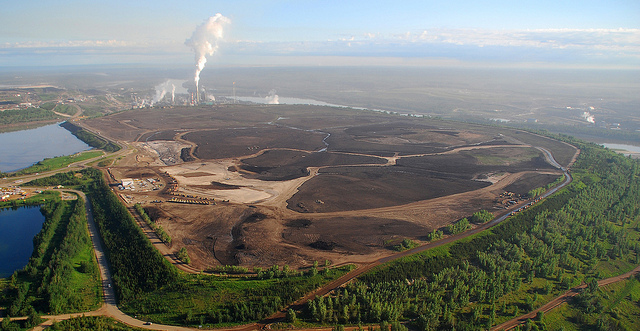
It wasn’t much of a bouquet — just a single lonely dandelion.
But it had been plucked from the middle of a barren stretch of oilsands coarse tailings. University of Saskatchewan biologist Susan Kaminskyj knew right away that made it something special.
“I was really excited,” she said. “Plants that grow in extreme environments very seldom do it by themselves.”
It took her about two weeks to find out what was helping the dandelion survive the harsh, acidic, water-repelling leftovers of oilsands mining. The answer may help clean them up.
The dandelion was hosting a symbiotic fungus that was literally eating what the miners had left behind. Kaminskyj and her colleagues separated the fungus and introduced it to a couple of seed mixtures commonly used in remediation projects.
“After a couple of months, we checked the petrochemicals in that soil and it had been substantially reduced,” she said. “The fungus eats them and converts them into carbon dioxide and water.”
Four-week-old tomato seedlings treated with the fungus and planted in coarse tailings were more than twice as large as untreated seedlings in the same soil.
Standard remediation seed mixes almost completely failed to germinate when planted in tailings. Treated with the fungus, 90 per cent of the seeds germinated.
Wheat seedlings also showed significantly stronger root growth after being inoculated with the fungus.
Bacteria have long been known to eat spilled oil and other hydrocarbons. Some varieties are already being used to help clean up spills or contaminated sites.
But bacteria have their limitations, said Kaminskyj.
“Bacteria don’t penetrate into things very well. Bacteria will grow on the surface or anywhere they are injected,” she said. “A fungus grows in a very different way and, in order to survive, it has to penetrate.
“Fungi will follow the oil.”
Kaminskyj said the fungus shows great promise in helping clean up coarse tailings, the larger particles that settle out of water used to separate oil from raw bitumen and which can be dried and moved.
“There are about 800 square kilometres in coarse tailings, So there’s a lot of work right there.”
But the problem of fine tailings, which remain suspended in water and fill the extensive tailings ponds at oilsands mines, isn’t addressed by the fungus.
“The far bigger challenge with oilsands tailings is in remediating the vast volume of fine silt and clay that remain suspended in fluid tailings ponds,” said Jodi McNeill of the clean energy think-tank Pembina Institute.
Those ponds now hold 1.3 trillion litres of toxic tailings, an amount expected to grow to more than 1.5 trillion litres over the next 20 years.
Field tests are planned for the fungus. Researchers will see what it can do to clean up an old diesel spill site in Banff National Park.
Kaminskyj said her lab is currently looking at a different fungus that might help revegetate wetlands reclaimed from oilsands mines.
She said the discovery is an example of how much of the environment is still unknown.
“There’s a lot of stuff about which we know nothing — particularly in the soils. We know very little.”
— Follow Bob Weber on Twitter at @row1960